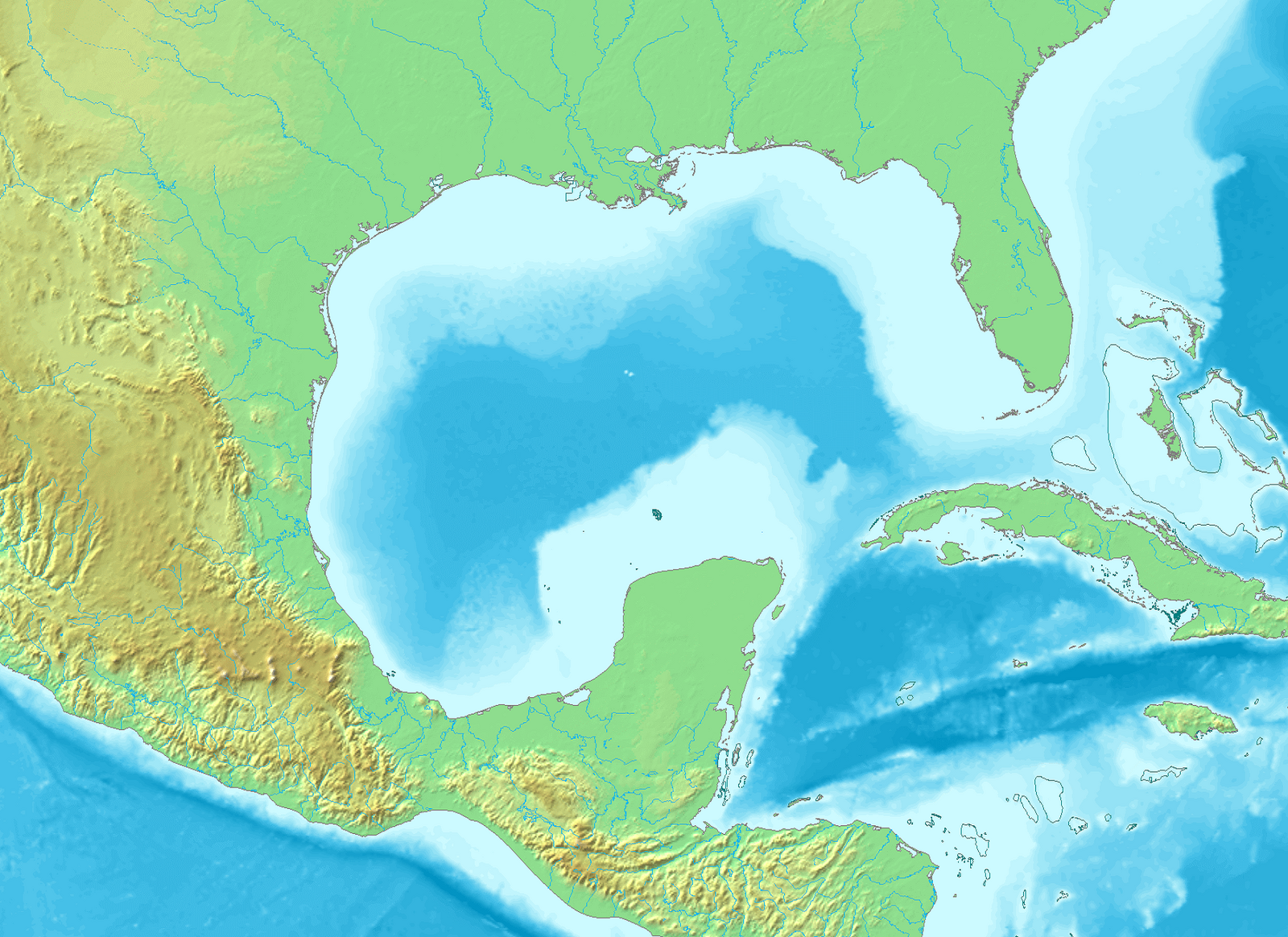
- Details
- By Professor Victoria Sutton
Guest Opinion. On January 20, 2025, President Trump signed Executive Order 14172, “Restoring Names That Honor American Greatness”, that
. . . required the Secretary of the Interior, acting pursuant to 43 U.S.C. 364 through 364f, to “take all appropriate actions to rename as the ‘Gulf of America’ the U.S. Continental Shelf area bounded on the northeast, north, and northwest by the State of Texas, Louisiana, Mississippi, Alabama and Florida and extending to the seaward boundary with Mexico and Cuba in the area formerly named as the Gulf of Mexico.”
This directive requires the Secretary of the Interior to officially change the name of the body of water now called the Gulf of Mexico to the Gulf of America on the U.S. list of official place names, by the U.S. Board on Geographic Names, for use by the United States. It does not change it for the rest of the world.
On February 9, 2025, President Trump commemorated his first visit to the Gulf of America with an Executive Order, declaring “Gulf of America Day.”
It is the right of a sovereign to name things—buildings, natural features and other objects within its geographical jurisdiction. But with shared bodies of water, when that sovereignty is divided as in the illustrated map of maritime boundaries above, it can lead to usually “light” conflict.
The “Gulf of Mexico” name is firmly grounded in tradition, if not official naming. The first year a document shows the “Gulf of Mexico” as the name of this body of water is 1524. This document is a map sent by Hernan Cortes to King Charles the V of Spain, and now appears in a special exhibit in Tampa, Florida. Namings such as this were often intended to signify the claiming of territory, and indeed that is what Hernan Cortes was intending to do. Despite its colorful history, it goes unmentioned in Pres. Trump’s Executive Order that states that this renaming is part of the Administration’s policy to restore pride in America’s greatness, specifically, the executive order directs that “ . . . in recognition of this flourishing economic resource and its critical importance to our Nation's economy and its people, I am directing that it officially be renamed the Gulf of America.”
In March, Mexico filed a lawsuit in Mexico against Google for changing the name of the Gulf of Mexico for U.S. users of Google, which goes too far in asserting Mexican sovereignty. Mexico Google users still see the entire body name of the “Gulf of Mexico”.
Is there an International Naming Authority?
The International Hydrographic Organization (IHO) focuses on charting marine boundaries; however, they have no formal international agreement or protocol for naming maritime areas, despite their historical statement: “The International Hydrographic Organization has had an interest in geographical place names from the very beginning of its existence in 1921.” It is not associated with the United Nations, but is a stand alone organization that was formed before the UN. Representation in the IHO is organized where “States are represented within the IHO by the national authority responsible for the provision of hydrographic and nautical charting services in each Member State. A Secretary General and two Directors are elected by Member States and administer the work of the Organization.” While they have no protocol for naming maritime areas, they are mainly concerned with mapping the floor of the oceans, with its ridges, seamounts and other natural features.
United Nations involvement?
The mission of the United Nations (established in 1945, after the IHO, formed in 1921), is to prevent the “scourge of war”; and thus, makes conflict resolution a priority. While there are several controversies over the naming of commonly bordered bodies of water, like the Persian Gulf vs. the Arabian Gulf, the United Nations has not chosen to enter that fray as mediator. But the United Nations has within its Economic and Social Council division (1945 UN Charter, Art. 61), nine expert units, one of which is a unit called the Group of Experts on Geographical Names (UNGEGN). Their work is to set standards and meet with the representatives of each nations’ geographical naming authority. The United Nations is strictly an intragovernmental organization that has no authority other than what its member nations agree to allow it to exercise through treaties and agreements. So if there is any mediating it would likely take place within this UNGEGN among the geographical naming authorities.
International Law and Naming
While there is no international protocol or law to officially name a body of water, each sovereign is left to name their own boundary waters within their jurisdictions. The Law of the Sea is the international legal instrument that we would first look to for determining where that jurisdiction lies.
However, as in the Gulf of Mexico, aka Gulf of America, there are three sovereign nations with jurisdictions over parts of this body of water. One group of scholars has determined that through “unilateral acts” provided for in the Law of the Sea, one nation could name a body of water beyond their jurisdiction, but to what extent this accrues any rights is more of a matter of international diplomacy, than perhaps a customary law. An analysis in 2010 concluded:
The silence of the 1982 Convention [The Law of the Sea] does not rule out the possibility for a state to create a new right to impose its chosen nomenclature of a particular maritime feature on the international community. The technique that could give birth to such an entitlement is the unilateral act. Indeed, the legal nature of such acts has been acknowledged (Eastern Greenland 1933, 69; Nuclear Tests 1974, 268) and recent years have seen a sharp rise in their usage: “(…) unilateral acts have become the most frequent tool of State interaction. They weave, so to speak, the daily web of international relations” (Zemanek 1998, 210).
The Law of the Sea allows filing exceptions while still signing the Convention if there is a disagreement over an “historic . . title.” This means these disagreements do not prevent the larger treaty from being signed or becoming effective. It is really an agreement to disagree.
The Law of the Sea also provides for maritime bilateral (between two nations) and multilateral (between many nations) agreements between nations. Indeed, there is a maritime treaty between Mexico and the United States: US/Mexico Maritime Boundary Treaty, 1978; which was not effective until 1997 and enrolled with the United Nations in 2001. It speaks strictly to boundaries and jurisdictions with no other authorities regarding naming.
In summary
Every nation has the sovereign power to name the body of water contiguous with its shore, and to use that name within their jurisdiction. The name can be adopted by any or all of the international organizations that record names. However, naming a body of water or a sea or a gulf could be done with a “unilateral” act under the Law of the Sea.
Did I mention, the United States often relies on the United Nations Convention on the Law of the Sea, but has not ratified the treaty (Senate approval), nor is it even a signatory (Executive Branch signing of the treaty)?
So we may be relying on international law that we have not agreed to be bound by, but then that is not out of the ordinary for the United States. Thus, we hereby rename the entire Gulf and rely on international law and diplomacy to make it customary.
To read more articles by Professor Sutton go to: https://profvictoria.substack.
Professor Victoria Sutton (Lumbee) is a law professor on the faculty of Texas Tech University. In 2005, Sutton became a founding member of the National Congress of American Indians, Policy Advisory Board to the NCAI Policy Center, positioning the Native American community to act and lead on policy issues affecting Indigenous communities in the United States.
Help us defend tribal sovereignty.
At Native News Online, our mission is rooted in telling the stories that strengthen sovereignty and uplift Indigenous voices — not just at year’s end, but every single day.
Because of your generosity last year, we were able to keep our reporters on the ground in tribal communities, at national gatherings and in the halls of Congress — covering the issues that matter most to Indian Country: sovereignty, culture, education, health and economic opportunity.
That support sustained us through a tough year in 2025. Now, as we look to the year ahead, we need your help right now to ensure warrior journalism remains strong — reporting that defends tribal sovereignty, amplifies Native truth, and holds power accountable.
 The stakes couldn't be higher. Your support keeps Native voices heard, Native stories told and Native sovereignty defended.
The stakes couldn't be higher. Your support keeps Native voices heard, Native stories told and Native sovereignty defended.
Stand with Warrior Journalism today.
Levi Rickert (Potawatomi), Editor & Publisher

